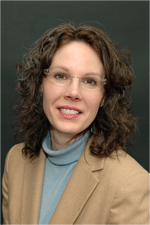|
SESUG is pleased to offer 6 extra-fee pre-conference Weekend Workshops on Sunday, October 19th. The half-day workshops are $125 if you register before midnight on September 18th and increase to $150 after that time. The workshop tuition includes a copy of the workshop materials and refreshments. If you need to arrive on Saturday to attend a morning workshop on Sunday, discounted lodging at the conference hotel rate is available on Saturday.
 Modernizing Your SAS® Code, or How to Avoid Becoming a SAS® Dinosaur
Modernizing Your SAS® Code, or How to Avoid Becoming a SAS® Dinosaur
Instructor: Warren Repole, SAS Institute
Sunday, October 19th, 8 am – 12 noon
New features of the SAS programming language often permit the replacement of complex algorithms and clunky workarounds with more elegant code. Some enhancements support the creation of more efficient solutions. Occasionally, optimal techniques have existed for a while, but they have been overlooked or underutilized. Whether you are a SAS programmer with many years of experience or a novice user who is responsible for maintaining legacy programs, implementing updated approaches may allow you to streamline your SAS applications, expedite the development and debugging process, and minimize future maintenance of the code. This seminar covers a wide range of discrete tasks with programming solutions involving the DATA step, Base SAS procedures, formats and functions, SAS macro language, SAS/GRAPH, and the SAS/ACCESS interface to PC files. While some of the solutions exploit SAS9 enhancements, many of them rely on features introduced in earlier SAS releases. The basis for the presentation is his publication "Don't Be a SAS Dinosaur: Modernize Your SAS Code", which was introduced as a pre-conference seminar at SAS Global Forum 2007 and has been upgraded to include topics related to SAS 9.2.
Pre-Requisite: SAS programming knowledge is necessary
Intended Audience: Anyone who writes or maintains traditional SAS programs, i.e., DATA and PROC steps plus macro.
Course Materials: Each attendee will receive a printed handout containing the examples demonstrated during the seminar. A CD of the material may be provided.
Warren Repole began using SAS software at the University of Florida in 1979 and has presented at SAS users group meetings since 1985. He has taught SAS classes since 1992, joining the SAS Training Center in Rockville, Maryland in 1994. Warren's specialties include DATA step and macro programming, SAS/GRAPH, and SAS/IntrNet. He currently holds the SAS Certified Advanced Programmer for SAS(r)9 and SAS Certified Warehouse Development Specialist credentials. In addition to his professional activities, Warren also has used SAS at home -- recreational SAS, so to speak -- to support such personal projects as reunion activities for his high school class and building championship-level fantasy baseball squads. The basis for the presentation is his publication "Don't Be a SAS Dinosaur: Modernize Your SAS Code", which was introduced as a pre-conference seminar at SAS Global Forum 2007 and has been upgraded to include topics related to SAS 9.2.
 Top
Top
 PROC SQL Programming: The Basics and Beyond
PROC SQL Programming: The Basics and Beyond
Instructor: Kirk Lafler
Sunday, October 19th, 8 am – 12 noon
Expand your PROC SQL skills with this PROC SQL Programming techniques course. Numerous examples of this powerful database language will be presented to improve a user’s mastery of the language while providing examples of PROC SQL programming techniques. Topics include strategies for creating and using virtual tables known as views, using case expressions to perform conditional logic and reclassification of data values, database design concepts including basic normalization rules, examples of implementing table integrity constraints, accessing information contained in read-only Dictionary tables, interfacing PROC SQL with the Macro facility to create macro variables and macro variable lists, rules associated with index creation and usage, simple and composite index constructs, undocumented and hard-to-find PROC SQL features for debugging purposes, complex queries using inner and outer join constructs including set operators, and query performance tuning strategies.
Pre-Requisite: SAS Basics course or 6-months SAS software experience
Intended Audience: All SAS Users
Course Materials: Detailed Course notes are provided
Kirk Paul Lafler is consultant and founder of Software Intelligence Corporation and has been programming in SAS since 1979. As the author of four books including PROC SQL: Beyond the Basics Using SAS, Kirk has written more than two hundred papers that have appeared in professional journals and SAS User Group proceedings. He has also been an Invited speaker and trainer at more than two hundred SAS user group conferences and meetings throughout North America.
 Top
Top
 Taming PROC REPORT
Taming PROC REPORT
Instructor: Mal Foley
Sunday, October 19th, 8 am – 12 noon
One of the most powerful PROCs in SAS is PROC REPORT. Just this one procedure does the yeoman's work of PROC PRINT, SORT, FREQ, MEANS, and TABULATE, and PUT-Statement Formatting (DATA _NULL_) combined. This seminar is for anyone interested in getting started with PROC REPORT. Through programming examples, it completely examines how to produce listings through the PRINT, SORT and DATA _NULL_ aspects of PROC REPORT. It also provides an introduction into the FREQ, MEANS and TABULATE aspects of PROC REPORT. The course briefly looks at ODS, but suggests an alternative way to create DOC files. Come experience what PROC REPORT can do for your SAS programming.
Pre-Requisite: Basic knowledge of SAS
Intended Audience: Anyone who wants to learn PROC REPORT.
Course Materials: A certificate of participation, and a bound manual containing all the core slides presented in the seminar
Malachy “Mal” Foley is an independent SAS trainer/programmer/analyst with 20 years of real-world SAS experience. He regularly conducts seminars and presents papers at SAS conferences and at companies around the country. Mal consults to businesses, universities and government agencies in both North and South America. He holds many speaking awards. Mal is president of the Research Triangle SAS Users Group (RTSUG) and chaired the Pharmaceutical Industry SAS Users Group Conference (PharmaSUG) in 2006.
 Top
Top
 Getting Your Data into SAS®
Getting Your Data into SAS®
Instructor: Stephanie Thompson
Sunday, October 19th, 1 – 5 pm
Where is your data stored?
- Oracle tables
- SQL Server tables
- Microsoft Access
- Microsoft Excel
- Text file
- All over the place
Over the years there has been a proliferation of ERP systems and other ways to collect and store data. Many times you need data from different systems to complete a single analysis. Sometimes getting data out can seen like quite a challenge. Luckily, SAS has the capability to access many different types of data but also different ways to do so. This workshop will cover how to use SAS to access data from a variety of sources through both presentation and live demonstration. Some practical tips on which methods work best or are fastest will also be covered.
The following methods to access data will be covered in the workshop:
- SAS libname engine
- PROC SQL
- ODBC
- PROC IMPORT (including the Import Wizard)
Pre-Requisite: General understanding of external data sources and familiarity with SAS programming interface.
Intended Audience: Intermediate
Course Materials: A copy of the slides and an example program sheet.
Stephanie Thompson has over fifteen years experience applying statistical and modeling techniques to business problems in various manufacturing, retail, and academic environments using SAS and other programming languages. She has a strong understanding of data structures, analytical tools, and operating environments. Stephanie is a SAS Certified Base Programmer for SAS9. She holds a B.S. in Industrial Engineering from Rochester Institute of Technology and an M.B.A. from St. Bonaventure University.
 Top
Top
 Introduction to the SAS® Macro Facility
Introduction to the SAS® Macro Facility
Instructor: Ben Cochran
Sunday, October 19th, 1 – 5 pm
This workshop is intended to get the student 'up and running' with the SAS Macro facility. The creation of macro variables, writing programs, using macro conditional logic and functions are all covered in this 1/2 day workshop. The course ends with a discussion of the DATA step interface and how to pass DATA step variables to the macro facility.
Pre-Requisite: A good understanding of Base SAS
Intended Audience: Intermediate
Course Materials: A 150 page “textbook” that is a copy of the slides, but also has supplementary material on most pages.
After working for SAS Institute for more that 11 years(in the professional services division), Ben left to start his own consulting and training company in the fall of 1996 - The Bedford Group. As an affiliate member of SAS Institute's Alliance Partner program, Ben has been involved in many consulting projects over the last twelve years. He has been teaching SAS courses since 1985. Ben has authored and presented dozens of SAS papers since 1988.
 Top
Top
 ODS Statistical Graphics: How You SHOULD Be Analyzing Data
ODS Statistical Graphics: How You SHOULD Be Analyzing Data
Instructor: David Cassell
Sunday, October 19th, 1 – 5 pm
ODS Statistical Graphics, introduced as an experimental system in SAS® 9.1, finally gives the data analyst the graphical diagnostics tools that SAS always lacked. Now, it is easy to create graphics that show whether the statistical model was reasonable, and graphics that indicate where model deficiencies lie. This leads to better analysis, easier modeling, and less coding to perform our tasks. It also leads to better documentation, as well as easier creation of graphics for end-sers or publication. The course begins with introductory material on ODS and ODS Statistical Graphics, followed by detailed examples showing how to best use ODS Statistical Graphics in a variety of standard SAS/STAT® procedures. Data analysis and modeling using ODS Statistical Graphics in PROC REG, PROC GLM, PROC LOGISTIC, and PROC MIXED - along with the creation of a host of relevant graphs and plots - will be the focus of the majority of the course, followed by analysis using less common SAS statistical procedures.
Pre-Requisite: Basic familiarity with stat procs such as PROC REG and PROC LOGISTIC, knowledge of stat concepts such as hypothesis tests, confidence intervals, and p-values.
Intended Audience: Intermediate
Course Materials: Copy of slides; CD of SAS programs and data used, additional SAS papers
David L. Cassell is director of Design Pathways, a consulting company based in Corvallis, Oregon providing survey sampling design and analysis, experimental design, statistical analysis, SAS programming, SAS systems design, and SAS training to public and private sector clients. David has used SAS software since 1978. He has given award-winning presentations at SUGI and regional SAS user group meetings, and is a member of the SAS-L Hall of Fame.
 Top
Top
|